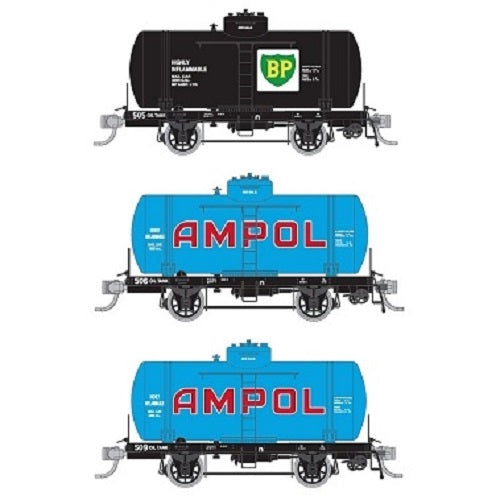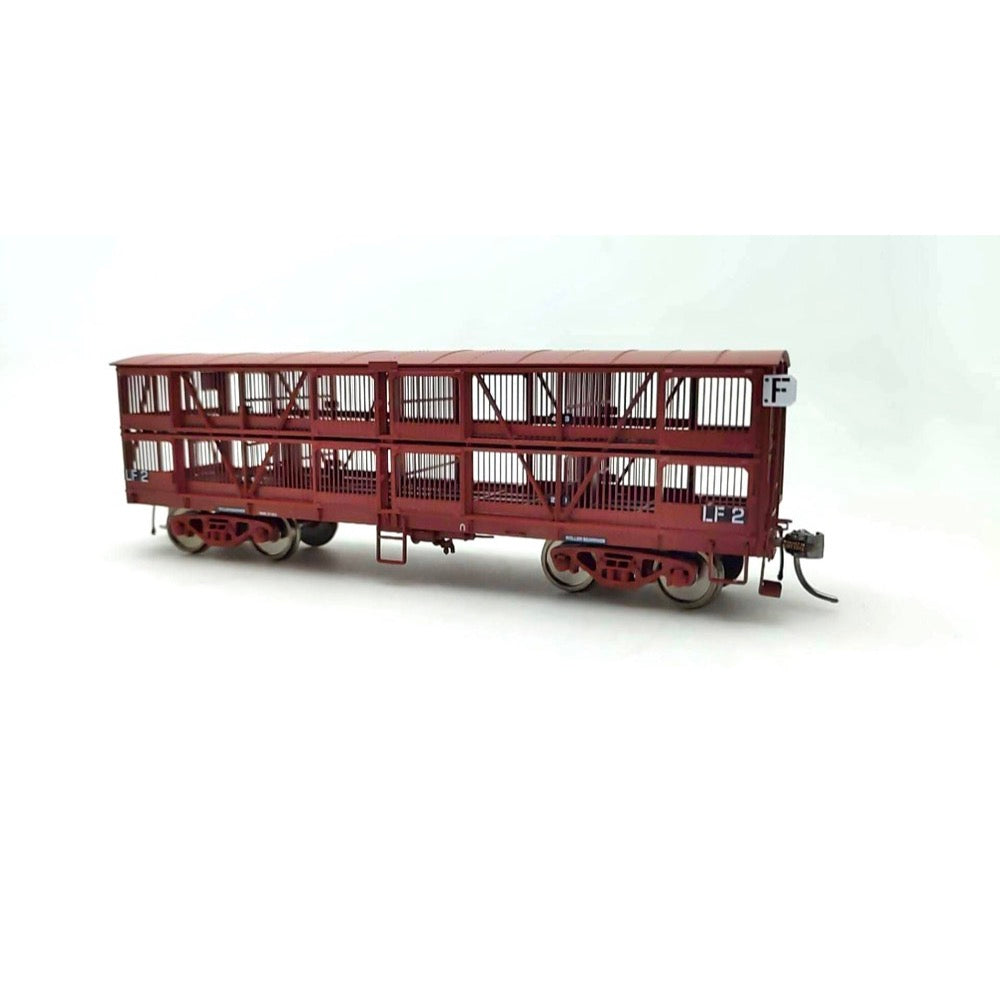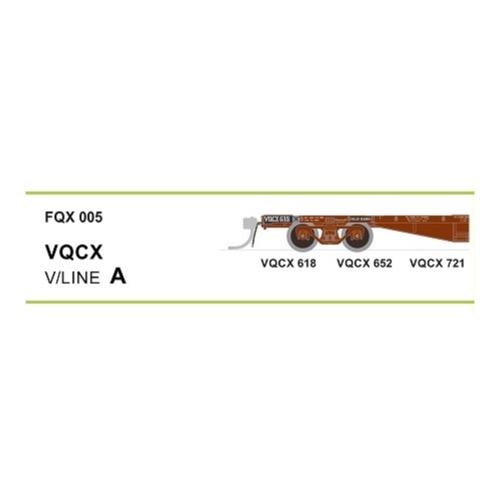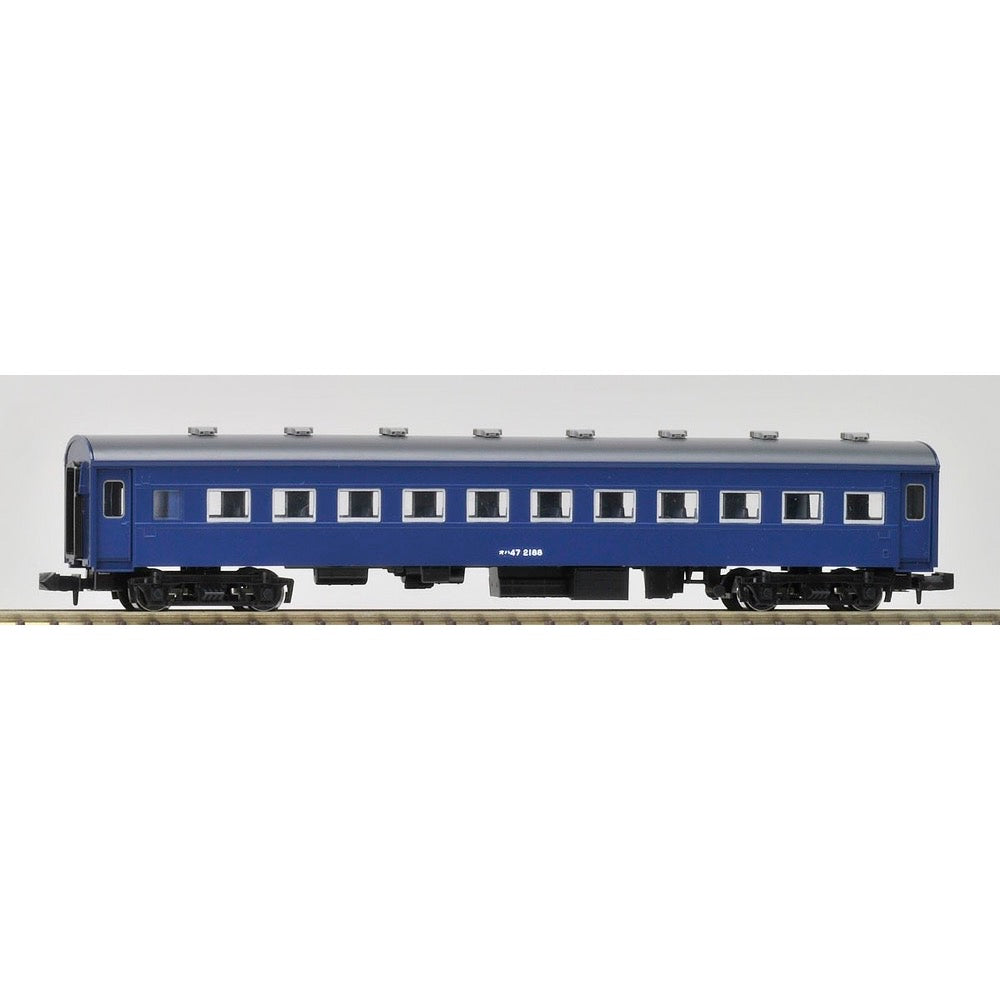
Tomix 9510 N OHA 47 Aluminum Sash Blue
12.00
$
<p>The Oha 47 series is a car that was made by repurposing the TR47 bogies used on the Suha 43 series into a 10 series sleeper car and replacing them with TR23 bogies. The model was changed to "Oha" because the weight was reduced by changing the bogies.</p>
<p>Since many Suha 43 series became Oha 47 series, most of the ordinary seating cars that remained in the later years were Oha 47 series, and some cars had aluminum sash windows.</p>
<h3>Features</h3>
<ul>
<li>Reproduces the Oha 47 type, which has a different bogie from the Suha 43 type</li>
<li>Reproduces the blue color of the modernization work car with aluminum sash passenger compartment windows</li>
<li>The TR23 type bogie is reproduced with roller bearings</li>
<li>The boarding and alighting doors are reproduced with steel doors (H-rubber windows), and can be replaced with large steel H-rubber windows with optional parts sold separately</li>
<li>The underfloor equipment is reproduced with an electric heating car</li>
<li>The car number is selectable and a transfer sheet is included</li>
<li>Uses a new current collecting system and black wheels</li>
<li>Compatible with the self-coupling TN coupler option</li>
</ul>
<h3>Contents</h3>
<p><strong>Vehicle</strong></p>
<ul>
<li>Oha 47 (aluminum sash, blue)</li>
</ul>
<p><strong>Accessories</strong></p>
<ul>
<li>Transfer sheet: vehicle number, etc.</li>
</ul>
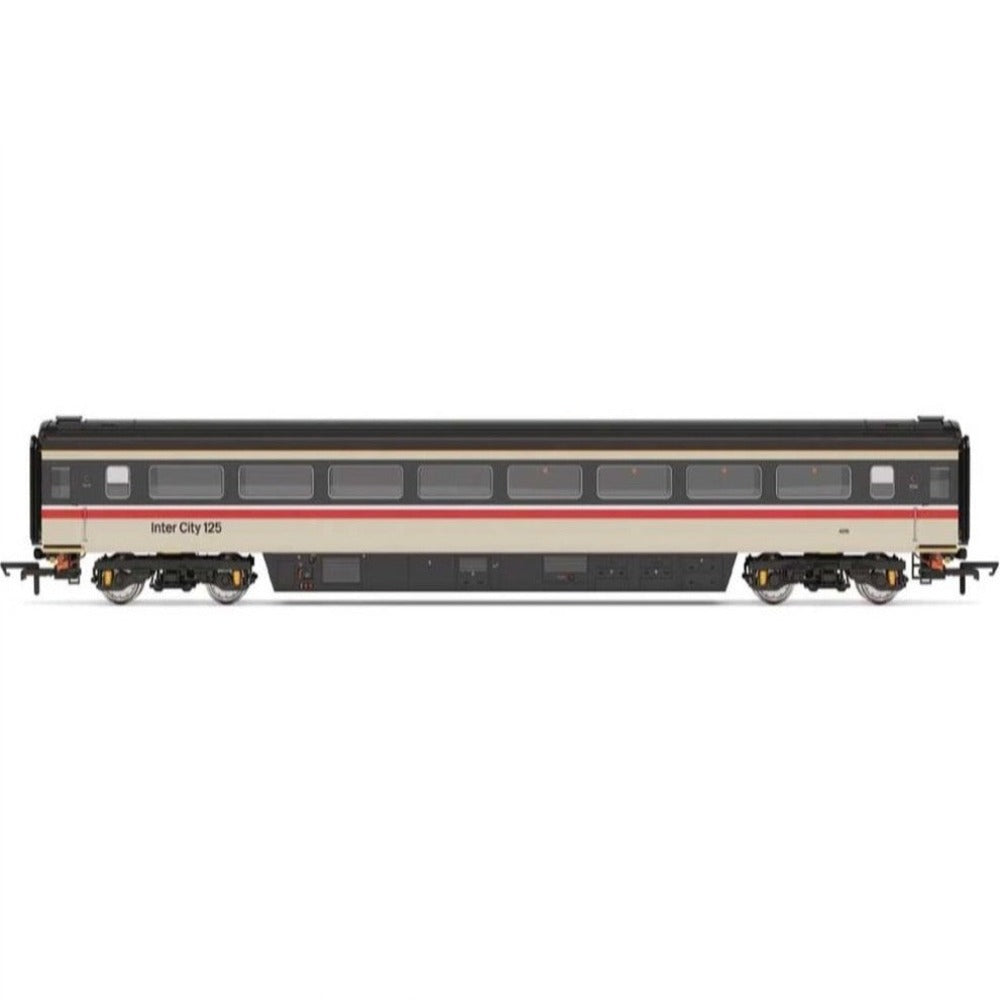
Hornby R40238B OO BR InterCity Mk3 Trailer Standard Open 42116 Era 8
48.00
$
<p>In-order to allow running at 125 mph on Britain's Victorian era railways, new rolling stock was needed by British Railways. Significant improvements over the Mk2 included new secondary air suspension between the bogies and the coach body as well as aerodynamic skirting on the underframe.</p><p>Mk3 coaches are 75ft (23m) long enabling far greater capacity than older coaches. Mk3 coaches also incorporate disk brakes and wheel slip protection enabling faster deceleration. The first Mk3 coaches to be delivered were used as part of the HST prototype along with the two Class 41 diesel power cars in 1972.</p><p>Mk3 coaches entered service in 1975 along with the Class 43 forming the iconic InterCity 125 trainset. After the HST Mk3 coach variant was introduced, further Mk3 coaches were introduced to the West Coast Mainline for use as part of locomotive hauled trains. Whilst Mk3 stock is standard for HST units, the standard locomotive hauled stock is Mk3a.</p><p>Mk3a stock differs from Mk3 stock due to the inclusion of buffers as well as a different electrical system that uses motor generator units in each coach to power air conditioning and other ancillaries Mk3a stock was built until 1984, before 3B stock with improved seating and lighting was built from 1985 to 1988.</p><p>After their brief stint in the BR Blue and Grey colour scheme the Mark 3 coaches saw a livery change in line with a corporate rebrand of high speed services. The new InterCity livery saw the coaches painted in a darker grey colour with a beige stripe along the top and bottom of the coaches with a red stripe under the windows. This livery was designed to emulate or copy the advanced yet ultimately fruitless APT project.</p><p>This livery would largely remain unchanged even after a further rebrand to Intercity Swallow, before the coaches would transfer into private ownership at the end of BR.These Mk3 coaches include the provision for lighting provided by the R7305 Maglight lighting unit, as well as fully detailed interiors and metal wheels throughout. For the first time, these coaches also include our new Buckeye style magnetic couplings.</p><h3>Specifications</h3><ul>
<li>Item Length - Without Packaging (cm): 30.3</li>
<li>Item Height - Without Packaging (cm): 5.5</li>
<li>Item Width - Without Packaging (cm): 3.5</li>
<li>Item Weight - Without Packaging: 0.158</li>
<li>Item Scale: 1:76 Scale 00 Gauge</li>
<li>Finish: Painted</li>
<li>Colour: Grey</li>
<li>Gauge: OO</li>
<li>Operator: BR</li>
<li>Designer: BREL</li>
<li>Livery: BR Intercity Grey</li>
<li>Minimum Curve (mm): Radius 2</li>
<li>Number of Parts: 1</li>
<li>Coupling Type: NEM Tension Lock</li>
</ul>
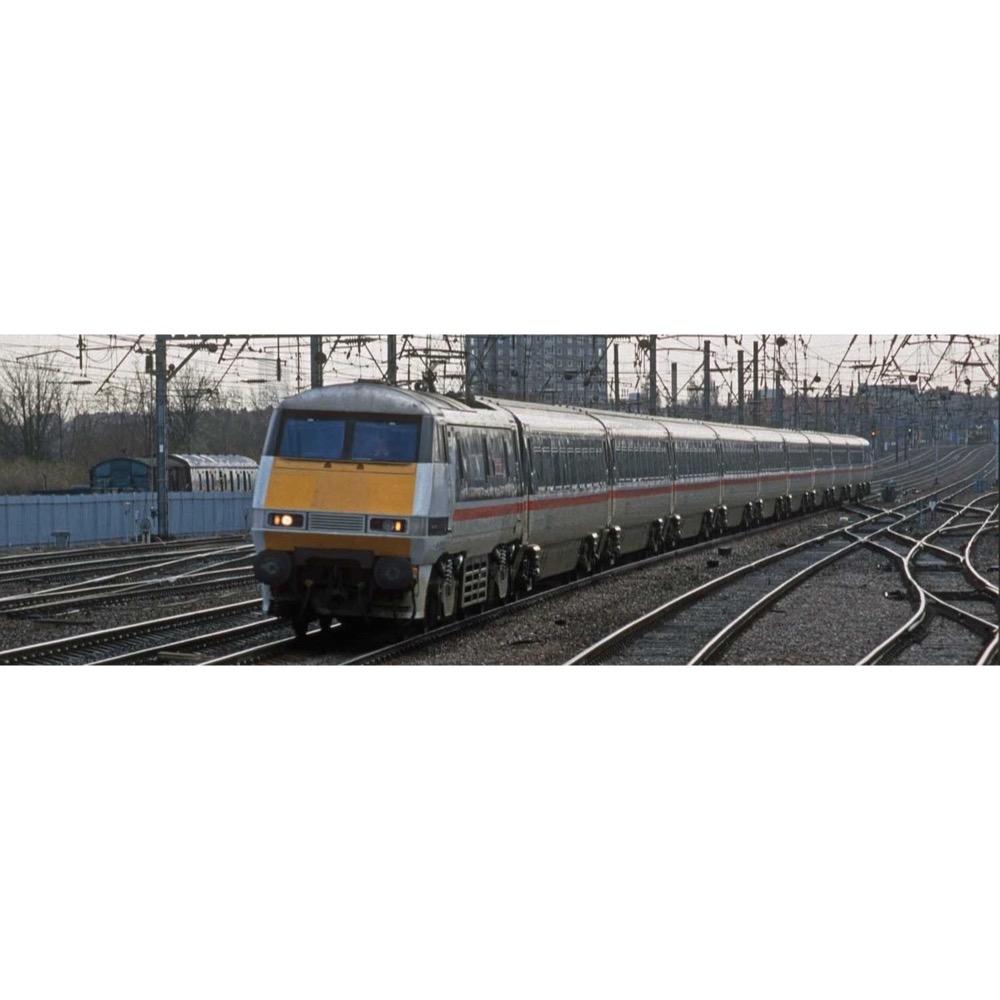
Hornby R40153 OO BR Mk4 Open First (Accessible Toilet) Coach L
40.00
$
<p>Built at Metro-Cammell's Washwood Heath factory, 314 Mk4 coaches were produced between 1989 and 1992. They were built specifically for use on the newly electrified East Coast Main Line, along with hopes that a second order for the West Coast Main Line would be placed at a later date, although this second order never transpired. Mk4 coaches featured many improvements over the Mk3s such as push-button operated plug-type doors, fully sealed gangways and a designed top speed of 140mph. Much of the Mk4 design was based upon the Advanced Passenger Train. In particular, Mk4 coaches feature sides profiled to allow a tilt of up to 6° with newly fitted tilting bogies.</p>
<p>Mk4ss entered service in 1989 and helped drive a significant increase in passenger traffic. With privatisation in 1996, all Mk4 coaches were sold to Evershot Rail Group who have since leased them out to the holder of the InterCity East Coast Franchise. The franchise was initially awarded to Great North Eastern Railway (GNER) and has since been operated by National Express East Coast, East Coast, Virgin Trains East Coast and London North Eastern Railway (LNER) owned by the Department for Transport.</p>
<p>Between October 2003 and November 2005 Bombardier Transportation, under contract from GNER, commenced refurbishment of the Mk4 stock, fitting new seating arrangements and introduced onboard Wi-Fi, a first for British rail services. This refurbishment programme was called 'Project Mallard' named after the Mallard steam locomotive, built in the 1930s by the London & North Eastern Railway and holder of the world speed record for steam locomotives.</p>
<p>Although Mk4 coaches have spent most of their lives on the ECML, there are plans to cascade them down to other lines due to the introduction of the Class 800 and Class 801 IEPs.</p>
<h3>Specification</h3>
<ul>
<li>Item Length - Without Packaging (cm): 33</li>
<li>Item Height - Without Packaging (cm): 5</li>
<li>Item Width - Without Packaging (cm): 3.5</li>
<li>Item Weight - Without Packaging: 0.2</li>
<li>Item Scale: 1:76 Scale 00 Gauge</li>
<li>Finish: Painted</li>
<li>License: No</li>
<li>Colour: Grey</li>
<li>Gauge: OO</li>
<li>Operator: BR</li>
<li>Designer: Met Cam</li>
<li>Livery: BR</li>
<li>Minimum Curve (mm): Radius 2</li>
<li>Number of Parts: 1</li>
</ul>
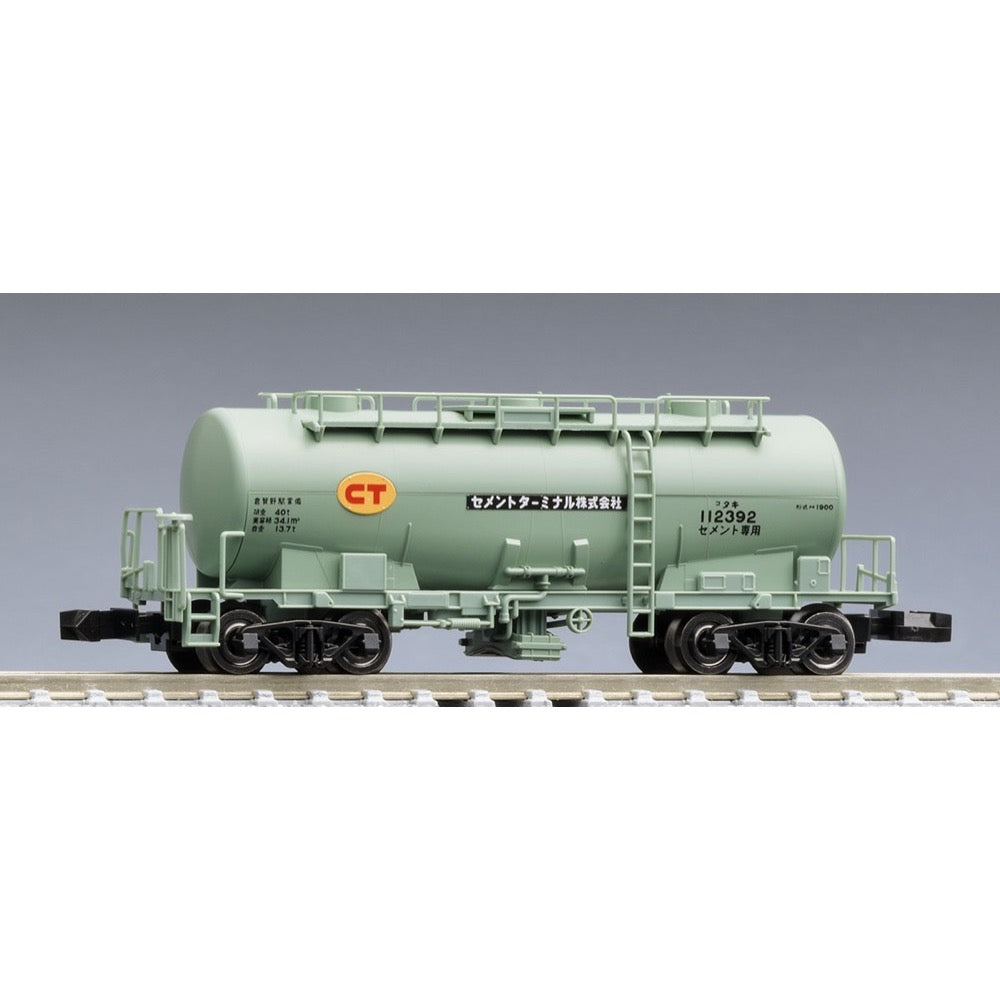
Tomix 8763 N 8763 TAKI 1900 Cement Terminal
12.00
$
<p>The Taki 1900 series cars owned by the Cement Terminal were distinctively painted in light green No. 3. They were used by JNR and JR mainly in the Kanto, Southern Tohoku, Hokuriku and Chubu regions, and in their later years were based in Motosu, Aomi and Higashi-Fujiwara, but all of them were retired around 2007 due to a decline in the transport of cement by rail.</p>
<h3>Features</h3>
<ul>
<li>Newly produced reproduction of the Taki 1900 type owned by the Cement Terminal</li>
<li>Reproduces the appearance with green paint</li>
<li>Reproduces the running board and tank support base shape that are different from <8740></li>
<li>The bogie is a newly produced TR41E type bogie equipped with coil springs</li>
<li>The ladder on the side of the tank and the running board on the top of the tank are reproduced with separate parts</li>
<li>The car number is printed</li>
<li>Reflector parts are included</li>
<li>Black bogie frame and black wheels are used</li>
</ul>
<h3>Contents</h3>
<p><strong>Vehicles</strong></p>
<ul>
<li>Taki 112392</li>
</ul>
<p><strong>Accessories</strong></p>
<ul>
<li>Runner parts: Reflector</li>
</ul>
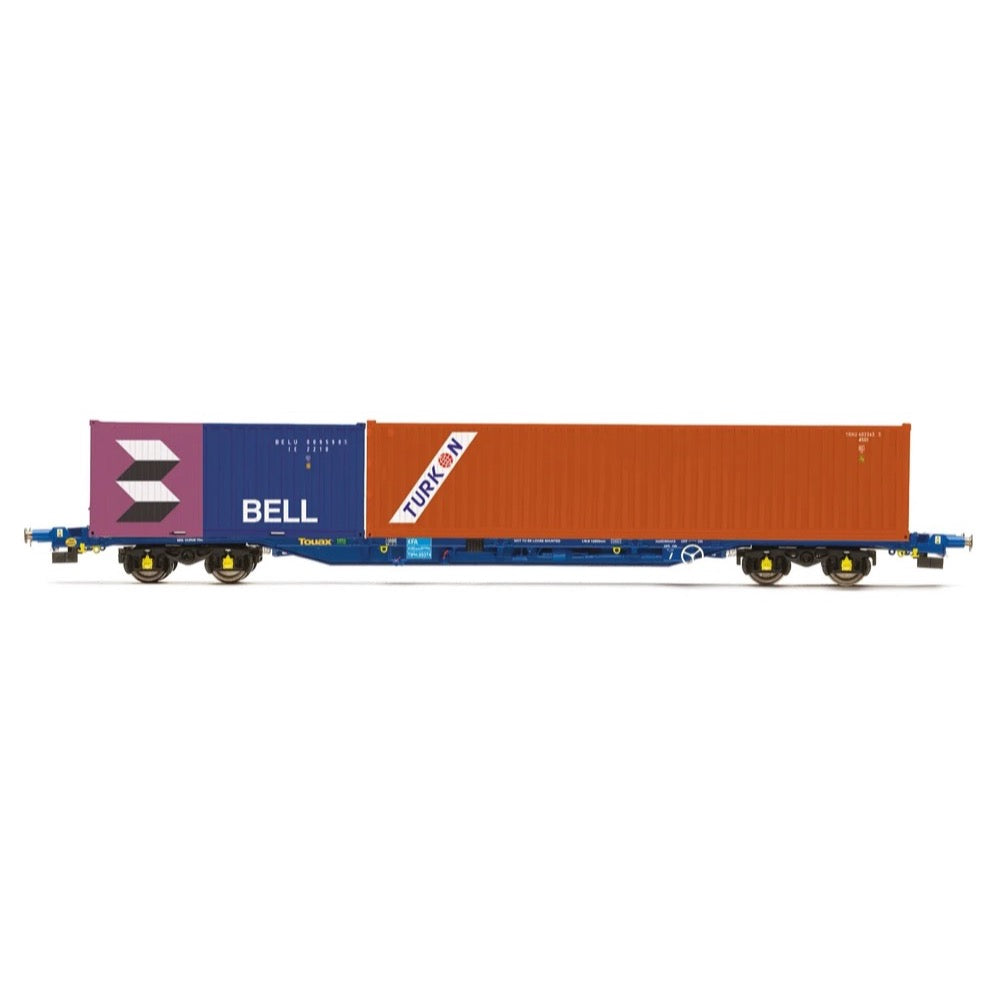
Hornby R60224 OO Touax KFA Container Wagon with 2 Containers Era 11
33.00
$
<p>A KFA is a container flat wagon, commonly these are built using bogies reclaimed from other wagons such as TEA tankers. Built in Finland from the late 1980s the KFA has become a mainstay of the modern rail network, able to haul standard sized intermodal shipping containers within the restricted loading gauge that has resulted from a continued reliance on a Victorian invention.</p>
<p>At just over 60 feet in length the KFA is able to accommodate a raft of different containers from the standardised range, which tend to use the two main sizes of 40 foot and 20 foot. Be it 3 twenty foot containers or a twenty footer with forty footer, the KFA is able to haul them with ease.</p>
<p>The Hornby KFA wagon is fully diecast, with some separately fitted details on the chassis enhancing the level of detail achieved with what can sometimes be seen as quite a plain wagon. Studs on the chassis allow for the fitting of modular containers both included with the set and available separately.</p>
<h4>Includes</h4>
<ul>
<li>1 x Wagon</li>
<li>2x Containers</li>
</ul>
<h4>Technical Specifications</h4>
<div>
<ul>
<li>Item Length - Without Packaging (cm): 8</li>
<li>Item Height - Without Packaging (cm): 5</li>
<li>Item Width - Without Packaging (cm): 3.5</li>
<li>Item Weight - Without Packaging: 0.08</li>
<li>Item Scale: 1:76 Scale 00 Gauge</li>
<li>Finish: Painted</li>
<li>Color: Multiple</li>
<li>Guage: OO</li>
<li>Operator: Railease</li>
<li>Designer: Rautarukki Transtech</li>
<li>Livery: Railease</li>
<li>Minimum Curve (mm): Radius 2</li>
<li>Number of Parts: 3</li>
<li>Buffer Type: Sprung Metal Buffers</li>
<li>Coupling Type: NEM Tension Lock</li>
<li>Minimum Curve (mm): Radius 2</li>
<li>Number of Parts: 3</li>
<li>Buffer Type: Sprung Metal Buffers</li>
<li>Coupling Type: NEM Tension Lock</li>
</ul>
</div>
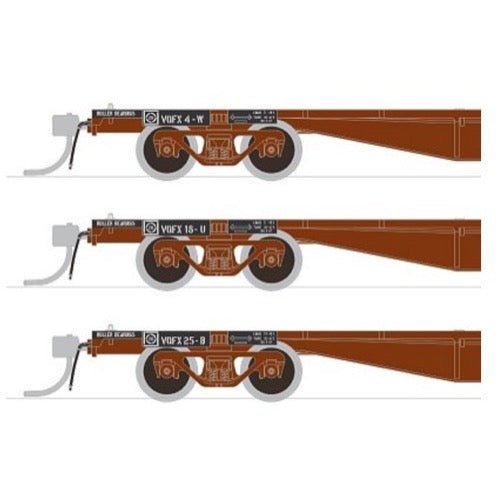
SDS Models HO V/Line VQFX Late Container Wagon 3 Pack
73.00
$
<h3>Features</h3>
<ui>
<li>Highly detailed Ready-to-Run HO scale model</li>
<li>Injection moulded high quality plastic bodywork</li>
<li>Diecast metal underfloor centre beam</li>
<li>Full brake rigging and underfloor detail</li>
<li>Semi scale 10.5mm diameter metal rimmed wheels</li>
<li>18” Minimum radius recommended</li>
</ui>
<br>
<h3>Photos shown are representative of the finished model. Numbers and colours may vary on final product.</h3>
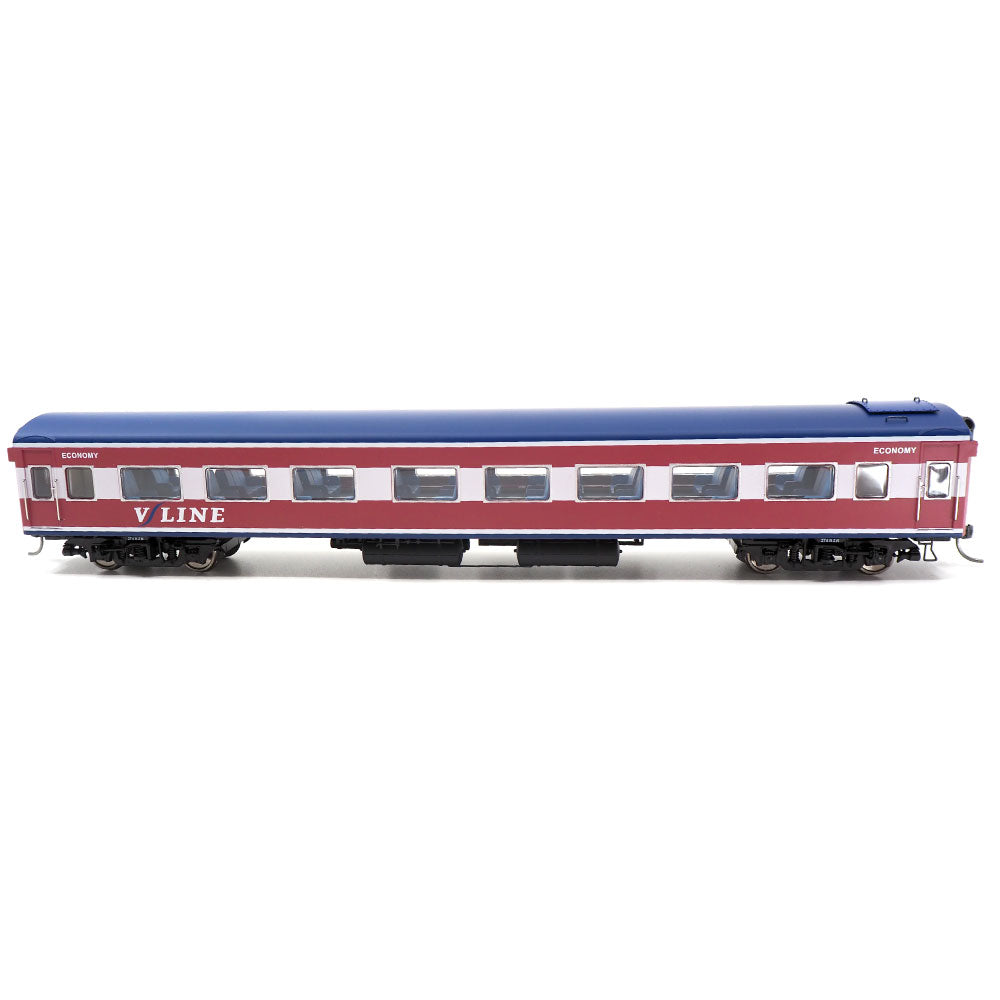
Powerline PC-527B HO BZN 274 V/Line Maroon/White/Blue Z Type Carriage
69.00
$
<h3>HO BZN 274 V/Line Maroon/White/Blue Z Type Carriage</h3>
<p>The Z type carriages are an air conditioned steel passenger carriage used on the railways of Victoria, Australia. The carriages were constructed by the Victorian Railways from 1957 for use on intrastate services. For most of their service, the Z cars operated as Z sets, however, in the early 1990s most sets were broken up, with carriages merged into N sets. They thus currently run on mixed service with Z sets.</p>
<ul>
<li>Highly detailed</li>
<li>Plastic, resin, and etch metal components</li>
<li>HO Scale</li>
<li>Z-Type Carriage</li>
</ul>

Powerline PR481A-2-08 48 Class Mark 1 SRA Candy 4808 DCC Sound Fitted
181.00
$
<p>The 48 Class diesel-electric locomotives were built by A E Goodwin (Auburn) for the New South Wales Government Railways between 1959 and 1970. Once the most ubiquitous locomotive in New South Wales, Australia, they are based on Alco frames and prime movers using General Electric electrical equipment.</p>
<h3>Features</h3>
<ul>
<li>HO-Scale</li>
<li>DCC-Ready (Requires a 21-Pin DCC Decoder)</li>
<li>Sound-Speaker Fitted</li>
<li>Revised Tooling</li>
<li>Twin-Brass Flywheels</li>
<li>All-Wheel Pickup</li>
<li>Injection Moulded Plastic</li>
<li>Five-Pole Motor</li>
<li>Directional Lighting</li>
<li>Brass-Etched Details</li>
<li>NMRA Wheel Profiles</li>
</ul>
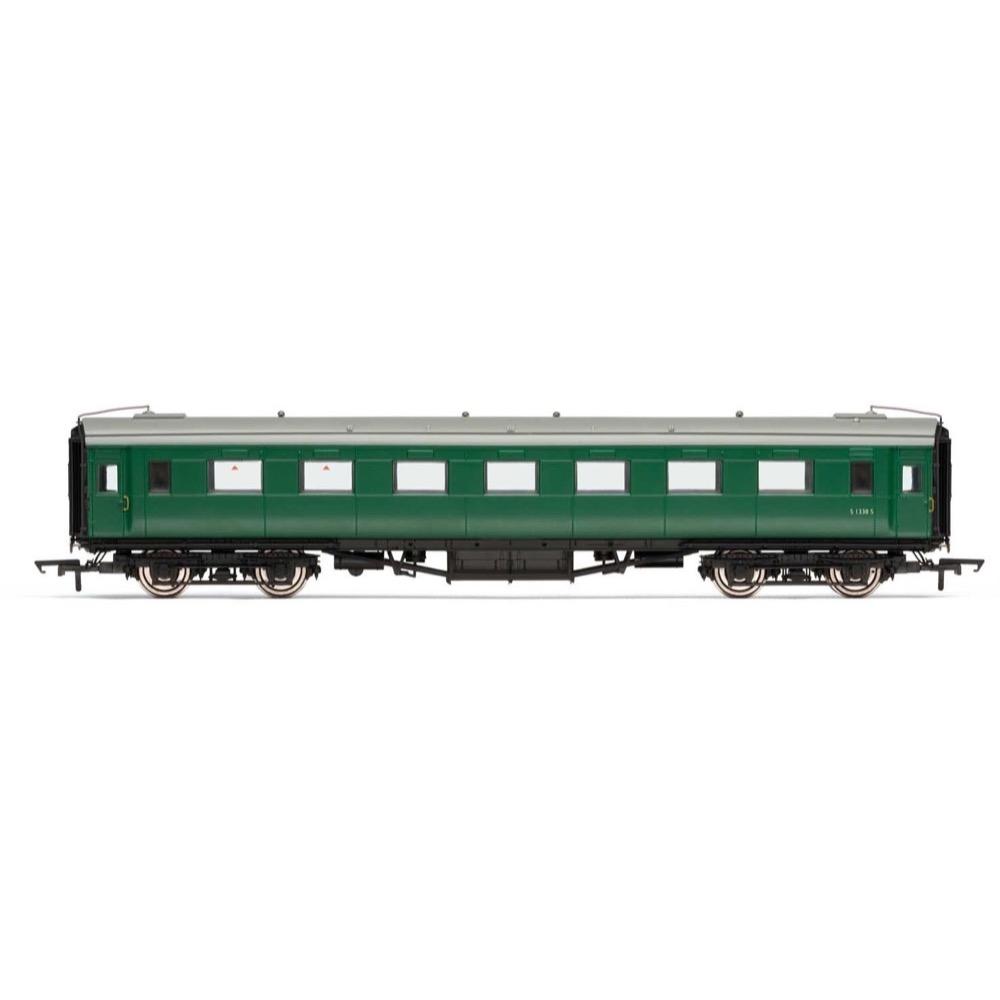
Hornby R40101 OO BR Maunsell Open Third S1338S
53.00
$
<p>Southern Railway inherited a variety of coach stock that had been used by other railway companies pre-grouping. Furthermore, Southern Railway continued to build new coaches to the design of the three largest companies. The Maunsell carriage was intended to be the standard carriage design for use across the Southern Railway lines, incorporating the best features of each of the former companies' designs.</p>
<p>Maunsell Coaches were constructed between 1925 and 1936 at Eastleigh, with 1200 being built. The standard coach design was 59ft long and made from wood with steel sheeting. One feature of the coaches was the low window placement which while less of an issue when seated, meant that whilst stood up it was difficult to see outside the coach without ducking. In 1929 this feature was amended, resulting in the introduction of 'high window' coaches, although on corridor coaches the low windows remained on the compartment side of the coach.</p>
<p>In operation, coaches were grouper together to form sets. The intention was that coaches would remain in these sets for long durations, with the set numbers appearing at the brake end of the set. 139 sets were created with loose stock being used to supplement the sets on busier trains.</p>
<h3>Specification</h3>
<ul>
<li>Item Length - Without Packaging (cm): 24.3</li>
<li>Item Height - Without Packaging (cm): 5</li>
<li>Item Width - Without Packaging (cm): 3.5</li>
<li>Item Weight - Without Packaging: 0.13</li>
<li>Item Scale: 1:76 Scale 00 Gauge</li>
<li>License: No</li>
<li>Finish: Painted</li>
<li>Colour: Green</li>
<li>Gauge: OO</li>
<li>Operator: BR</li>
<li>Designer: Maunsell</li>
<li>Wheel Configuration: 0-4-0T</li>
<li>Livery: BR Green</li>
<li>Minimum Curve (mm): Radius 2</li>
<li>Number of Parts: 1</li>
<li>Motor: 5 pole skew wound</li>
</ul>


